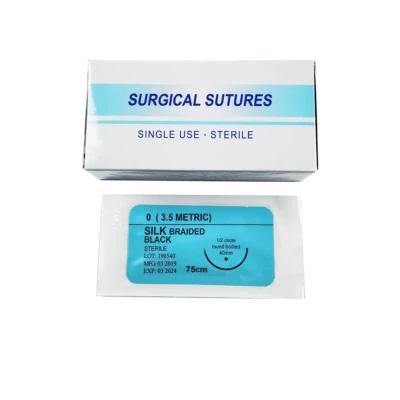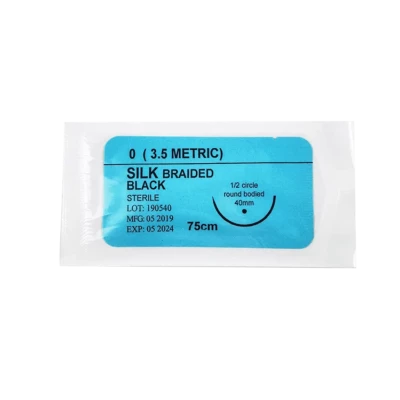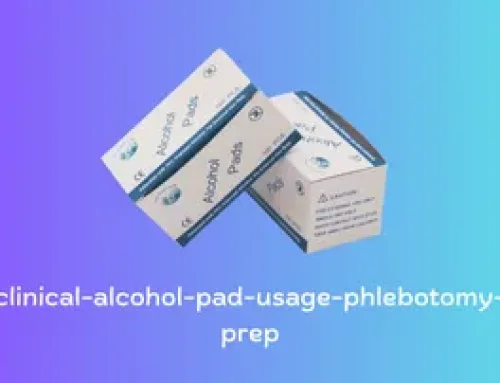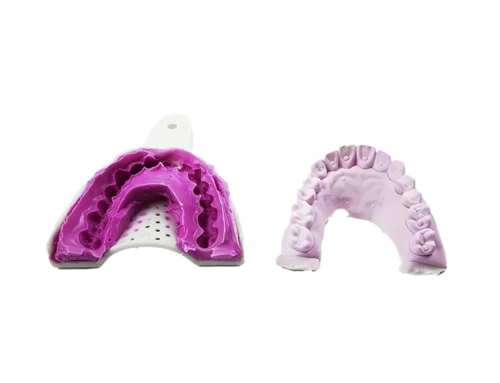Incisions after surgery or other procedures are closed with sutures, commonly known as stitches. They are essential for guaranteeing healthy recovery and avoiding infections. Silk sutures, non-absorbable surgical sutures, are one of the most well-known and often-used types of sutures among those that are available on the market. 20 things regarding silk sutures that you should be aware of are covered in this article.
1. What are silk sutures?
Silk sutures are surgical threads made from the cocoons of silkworms. They are widely used in medical procedures due to their strength, flexibility, and biocompatibility. Silk sutures are available in a variety of sizes and colors, making them suitable for various surgical procedures.
2. How are silk sutures made?
The process of making silk sutures starts with the breeding of silkworms. Once the cocoons are ready, they are harvested, and the silk fibers are extracted. The extracted fibers are then processed and twisted into threads, which are further sterilized and packaged for medical use.

3. What are the properties of silk sutures?
Silk sutures are known for their excellent strength, flexibility, and biocompatibility. They are highly resistant to breaking and knotting, making them ideal for use in surgical procedures. Additionally, silk sutures are absorbable, which means they are eventually broken down and absorbed by the body, leaving no need for removal.
4. What are the types of silk sutures?
Silk sutures are available in two types: braided and non-braided. Braided silk sutures are stronger and more flexible, making them suitable for use in high-tension areas. On the other hand, non-braided silk sutures are smoother and finer, making them ideal for use in delicate or sensitive areas.
5. What are the advantages of using silk sutures?
There are several advantages of using silk sutures, including their strength, flexibility, and biocompatibility. They are also absorbable, reducing the risk of infection and scarring. Additionally, silk sutures cause minimal tissue reaction, making them suitable for use in delicate or sensitive areas.
6. What are the disadvantages of using silk sutures?
One of the main disadvantages of using silk sutures is their relatively slow rate of absorption. This means that the sutures remain in the body for a longer period, increasing the risk of infection. Additionally, silk sutures can cause an allergic reaction in some individuals, making it important to choose an alternative suture material if necessary.
7. What are the indications for using silk sutures?
Silk sutures are commonly used in a variety of surgical procedures, including general surgery, orthopedics, ophthalmology, and plastic surgery. They are also used in wound closure, laceration repair, and skin closures following cosmetic procedures.
8. What are the contraindications for using silk sutures?
There are some contraindications for using silk sutures, including infection, wound dehiscence, and tissue necrosis. Additionally, silk sutures are not suitable for use in areas with high tension, such as the chest or abdomen, as they are more likely to break or knot.
9. How are silk sutures removed?
Silk sutures are usually removed after 7-10 days, depending on the location and type of suture. In most cases, sutures are removed in the doctor’s office under sterile conditions. The sutures are cut or snipped, and the ends are then pulled gently to remove them from the skin.
10. What are the care instructions for silk sutures?
To promote proper healing and minimize the risk of infection, it is important to follow the care instructions provided by the doctor. This may include keeping the sutured area clean and dry, avoiding excessive movement, and avoiding activities that could increase the risk of infection. In addition, it is important to follow up with the doctor as directed for wound checks and suture removal.
11. What are the complications associated with silk sutures?
While silk sutures are generally safe and effective, there are some complications that may occur, including infection, wound dehiscence, and tissue necrosis. In rare cases, silk sutures can also cause an allergic reaction or lead to scarring.

12. How do silk sutures compare to other suture materials?
Silk sutures are one of the most popular and widely used suture materials, and they offer several advantages over other materials, such as their strength, flexibility, and biocompatibility. However, other suture materials, such as nylon or polypropylene, may offer advantages in certain surgical procedures, such as faster absorption or greater tensile strength.
13. What are the cost considerations for silk sutures?
The cost of silk sutures can vary depending on the type and size of the suture, as well as the location of the procedure. In general, silk sutures are more expensive than other suture materials, such as nylon or polypropylene. However, their benefits, such as absorbability and biocompatibility, may make them the best choice for certain surgical procedures.
14. What are the storage considerations for silk sutures?
Silk sutures should be stored in a cool, dry place to prevent deterioration and damage. They should also be protected from direct sunlight and heat and should be kept away from strong chemicals or other substances that could damage the sutures.
15. What are the environmental considerations for silk sutures?
Silk sutures are a natural product, and the process of making silk sutures can have a significant impact on the environment. For example, the breeding and harvesting of silkworms can lead to deforestation, pesticide use, and the death of large numbers of insects. Additionally, the processing of silk fibers requires significant amounts of energy and resources.
16. How can I ensure the quality of silk sutures?
To ensure the quality of silk sutures, it is important to choose a reputable supplier and follow good manufacturing practices. In addition, it is important to check the expiration date of the sutures and to store them properly to prevent deterioration and damage.
17. What are the ethical considerations for silk sutures?
There are several ethical considerations associated with the use of silk sutures, including the treatment of silkworms and the impact of the silk production process on the environment. Some individuals and organizations may choose to avoid silk sutures for ethical or environmental reasons and may choose alternative suture materials instead.
18. Are silk sutures strong?
Yes, silk sutures are considered to have good tensile strength, which means they can withstand a significant amount of tension or pulling force without breaking. This is one of the reasons why silk sutures are commonly used in surgical procedures. However, the strength of silk sutures can vary depending on factors such as the size and thickness of the suture, the type of knot used, and the surgical technique. In general, silk sutures are considered to have good strength and durability, making them a reliable option for many types of surgeries.
19. What is the difference between silk and nylon sutures?
Silk and nylon are two common materials used in the production of sutures for medical procedures. The key differences between these two materials include:
- Strength: Silk sutures are known for their strength, and are typically used in procedures where a strong, durable suture is required. Nylon sutures are also strong, but are not as strong as silk sutures.
- Flexibility: Silk sutures are more flexible than nylon sutures, making them easier to handle and manipulate during a procedure. This can be particularly important in procedures that require a suture to be tied in tight knots, or where the suture must be manipulated in small, delicate spaces.
- Absorbability: Silk sutures are absorbable, which means that they are designed to dissolve and be absorbed by the body over time. Nylon sutures, on the other hand, are non-absorbable and must be removed after the procedure.
- Cost: Silk sutures are typically more expensive than nylon sutures, due to the higher cost of producing silk and the more complex manufacturing process required to produce sutures from this material.
- Tissue reactivity: Silk sutures are known for their low tissue reactivity, meaning that they are less likely to cause an immune reaction in the body. Nylon sutures can cause a mild tissue reaction in some patients, but this is generally not a major concern.
In general, the choice between silk and nylon sutures will depend on the specific requirements of the procedure, the patient’s medical history, and the preference of the healthcare provider. Both materials have their strengths and weaknesses, and the best choice will depend on the specific needs of each patient and procedure.
20. How can I recycle or dispose of used silk sutures?
Proper disposal of used silk sutures is important for ensuring the safety of both healthcare workers and the environment. Here are some guidelines for recycling or disposing of used silk sutures:
- Check local regulations: Before disposing of used silk sutures, it is important to check local regulations to determine the proper method of disposal in your area. Some areas may require sutures to be disposed of as medical waste, while others may allow them to be disposed of as regular waste.
- Sterilized sutures: Used silk sutures should be sterilized to reduce the risk of spreading infection. This can be done by boiling the sutures in water for at least 10 minutes, or by using a commercial sterilization solution.
- Place the sutures in a secure container: Used silk sutures should be placed in a secure container, such as a sharps container, to prevent accidental needle sticks. The container should then be labeled as medical waste.
- Dispose of sutures properly: Used silk sutures should be disposed of properly, following local regulations. In many cases, this will involve placing the sutures in a designated medical waste container, which will be transported to a facility for safe disposal.
By following these guidelines, you can help to ensure the safe and responsible disposal of used silk sutures. It is important to remember that these sutures are considered to be medical waste, and as such, should be handled with care to reduce the risk of spreading infection or causing harm to the environment.
In conclusion, silk sutures have been used in medicine for thousands of years and are a safe and effective option for closing wounds. They are made of natural fibers and are considered to be non-absorbable, meaning that they do not dissolve or break down over time. With careful consideration of the type of wound and the patient’s overall health, silk sutures can provide reliable and long-lasting results.




